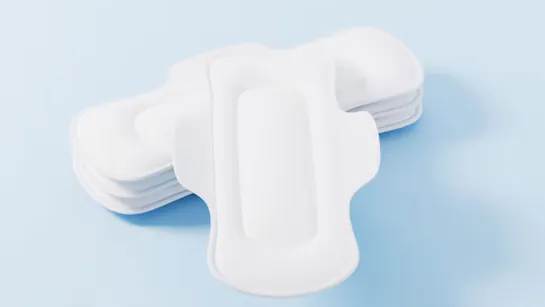Now Reading: Sanitary Pad Mould Claims Debunked
-
01
Sanitary Pad Mould Claims Debunked
Sanitary Pad Mould Claims Debunked

New Delhi, November 15, 2025: A video claiming that certain brands of sanitary pads develop mould and fungus has gained substantial traction across social media platforms, causing considerable alarm among consumers. The viral footage, which typically features a demonstrator examining a pad that is claimed to be contaminated, was quickly circulated across messaging applications and digital feeds.
The central assertion of the video is that these products, which are frequently bought and are used by women globally, pose a serious health risk due to fungal growth. The misleading nature of the claims was not immediately apparent to many viewers, leading to genuine public concern regarding menstrual hygiene safety.
The video’s rapid spread was fueled by the emotional nature of the topic, as sanitary products are generally expected to meet the highest standards of safety and hygiene. The demonstration, often filmed with close-up shots, is used to visually ‘prove’ the existence of the supposed mould, which is often presented as a dark, irregular patch on the pad’s surface or within its absorbent layers.
Expert Fact-Check Initiated
In response to the widespread panic and the serious nature of the claims, the video and the product safety concerns were officially addressed by medical professionals. Leading gynaecologists and public health experts were consulted and were tasked with conducting a thorough fact-check of the viral footage. The collective medical opinion was quickly formulated and was presented to the public to dispel the health fears.
The core claim that unopened, properly stored sanitary pads could develop mould was categorically dismissed by these experts. It was explained that sanitary pads, which are manufactured in sterilized conditions and are generally sealed in airtight, moisture-resistant packaging, are not susceptible to mould growth unless they are exposed to specific, high-risk external conditions. For mould to form, high moisture levels, heat, and organic material are required over an extended period, conditions that are rarely met by sealed products.
Also Read: Sidharth Malhotra’ Lipstick Ad and the Anatomy of a Viral Beauty Campaign
Misconceptions and Real Risk Factors
The patches or dark spots shown in the video are thought by many experts to be either pre-existing imperfections in the material, discoloration from a chemical reaction, or the result of the pad being stored improperly over a very long time. It was emphasized by gynaecologists that any pad that has been opened and has been exposed to humid air, or has been kept in a damp environment (such as a bathroom shelf for months), could be contaminated with various environmental micro-organisms, which is considered the real risk.
Consumers were advised by health professionals to always check the manufacturing and expiry dates on the packaging before purchase. Furthermore, the public was cautioned against blindly believing sensational, unverified health claims that are spread via social media. Assurance was provided that sanitary pads are subject to stringent quality controls and are generally safe when they are stored correctly and are used within the recommended timeframe. The conclusion was reached that the viral video was misleading and the public’s fears were considered unwarranted.










